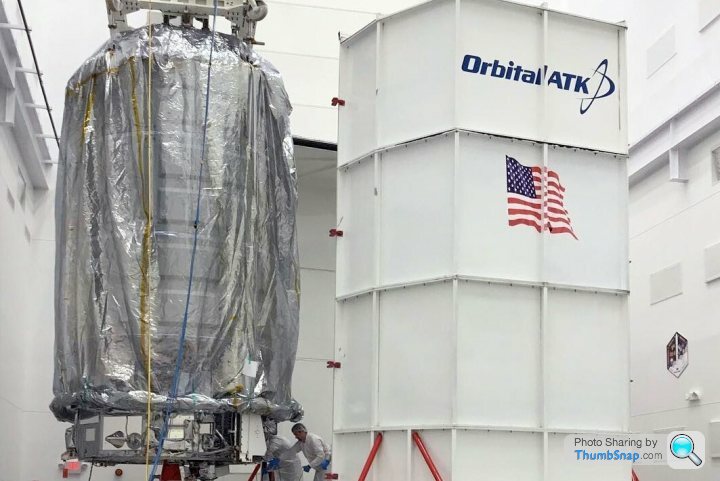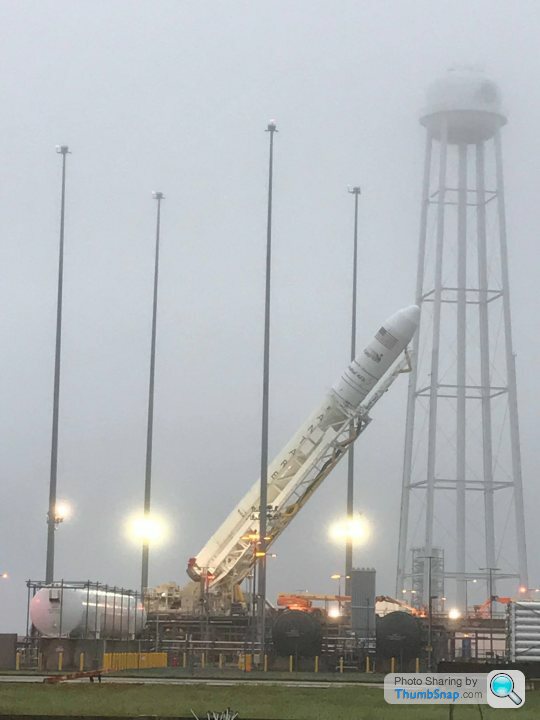Discussion
Orbital ATK is hopeful that its Next Generation Launcher will get a contract to launch military payloads
https://spaceflightnow.com/2018/04/12/orbital-atk-...
The design looks to me a bit reminiscent of the old idea of an SRB based launcher
https://spaceflightnow.com/2018/04/12/orbital-atk-...
The design looks to me a bit reminiscent of the old idea of an SRB based launcher
Solid propellant rockets is their forté. Interestingly, the article states that the rocket bodies would be composite rather than metal. Before the Challenger accident, Morton Thiokol (as it was known back then) were working on a wound filament design for the Shuttle SRBs. After the accident, they abandoned that plan.
However, I bet that a lot of the work that was done on that programme will be incorporated, suitably updated, in these new of generation solid rocket boosters.
However, I bet that a lot of the work that was done on that programme will be incorporated, suitably updated, in these new of generation solid rocket boosters.
Yes - NASA really need to start thinking outside the box, and look at liquid fuelled boosters capable of landing back in a similar manner to the Falcon 9. In addition to the cost implications, NASA is running the risk of losing its image as an innovator by continuing to develop throwaway launch vehicles
Yes - though at the flight rate expected for SLS maintaining the recovery infrastructure ( ships & maintenance, crew, refurb workforce etc. ) would be even more uneconomical than it was for the Shuttle - I read somewhere that worked out over the life of the Shuttle programme it would have been much cheaper to just ditch the SRBs.
MartG said:
Yes - though at the flight rate expected for SLS maintaining the recovery infrastructure ( ships & maintenance, crew, refurb workforce etc. ) would be even more uneconomical than it was for the Shuttle - I read somewhere that worked out over the life of the Shuttle programme it would have been much cheaper to just ditch the SRBs.
Maybe they should have aimed to up the flight rate. The more you do something, the cheaper it gets.Orbital ATK has officially unveiled the name of it's Next Generation Launch Vehicle for the USAF's Evolved Expendable Launch Vehicle Program: Omega (on the right of the diagram)

The core can support up to 6 solid rocket boosters, and will have a 5 meter payload fairing

No specs for LEO performance, as its target market is for geosynchronous satellites - 11.13 tons to GTO, 8.5 tons to GEO

The core can support up to 6 solid rocket boosters, and will have a 5 meter payload fairing

No specs for LEO performance, as its target market is for geosynchronous satellites - 11.13 tons to GTO, 8.5 tons to GEO
"We are excited to announce that we are targeting Sunday, May 20 for the launch of our OA-9 mission to the International Space Station! The 5-minute window will open at 5:04 a.m. EDT. Our Cygnus spacecraft is scheduled to launch aboard an Antares rocket for the seventh time from NASA’s Wallops Flight Facility in Virginia. Cygnus will deliver vital equipment, supplies and scientific equipment to the space station as part of the company’s Commercial Resupply Services (CRS) contract with NASA. Today, the Antares launch vehicle is integrated, initial cargo has been loaded and the Cygnus spacecraft is ready for fueling. Read more on our website"




Orbital ATK's first nine Cygnus cargo spacecraft were christened for late astronauts who worked for the company or who helped advance U.S. spaceflight. For its tenth Cygnus' namesake, Orbital ATK has chosen their late vice chairman.
The "S.S. J.R. Thompson" will launch as a memorial to the executive who also served as NASA's deputy administrator and helped develop rocket engines for the Saturn V and the space shuttle.

The "S.S. J.R. Thompson" will launch as a memorial to the executive who also served as NASA's deputy administrator and helped develop rocket engines for the Saturn V and the space shuttle.

Gassing Station | Science! | Top of Page | What's New | My Stuff




 )
)


